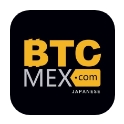DeFi Vocabulary
Must Know Terms in DeFi: DeFi Vocabulary Toolkit
DeFi is leading the cryptocurrency market this year, and is one of the main reasons for the bullish sentiment of Ethereum. How do you understand all the words being thrown around in the space? Well, we have got you covered with a comprehensive list of DeFi terms.
API: Application Program Interface. An intermediary device/software between two or more software that helps them interact with each other.
APY: This refers to the Annual Percentage Yield, which is the actual return on an investment after one year whilst taking into account the effect of compounding interest.
APR: Annual Percentage Rate. This is the effective flat yearly rate that is charged to borrowers and paid to investors; this unlike APY does not take into account the effect of a compounding interest rate.
Arbitrage: Profiting by trading an asset between different markets and thus reducing the risk. This is because the price may be different in different markets, for example purchasing crypto in a low regulation region and selling it to ma market with high regulations.
ATH: All Time High. The highest price ever reached by an asset.
ATL: All Time Low. Refers to the lowest price an asset has ever reached.
Atomic Swap: This is an activity in the crypto space which allows users to exchange an asset directly into other assets. Without the use of a centralized exchange such as Binance, an example of this is UniSwap.
Bag Holder: Informal term to describe someone holding a crypto asset for a long period of time.
Block: A digital file that can be penetrated/ manipulated that stores information regarding any and all activity on the network it represents.
Block Height: Numerical representation explaining the current number of the block being hashed.
Block Reward: The reward given to miners/ nodes for being part of the block being hashed.
Confirmation: Validation of a transaction.
Curve: An exchange liquidity pool on Ethereum designed for stablecoin trading. It is designed to be low risk and a supplemental income exchange for users. To follow future developments and learn more about Curve we suggest following their Twitter and joining their Telegram group. If you want to get a more in-depth look into how Curve works, please check out their Github.
Centralized: This is when something is controlled by one single entity/person; such as the Binance exchange; its ownership and control can be tracked to one single entity or owner.
CeFi: Centralized finance. This is when people earn interest on their crypto holdings by lending/ borrowing through a centralized institution; with examples being Binance, Coinbase and Crypto.com. Read more
ChainLink: A cryptocurrency that helps to solve the link between smart contracts and physical objects that are outside of the blockchain sphere. It is therefore, called an oracle network, meaning it is a linkage between the two spheres through smart contracts. Read more
DAPP: A decentralized application.
Decentralized: Not owned by a single entity. Ownership is spread out to whoever wants to be a part of it.
DeFi: Decentralized Finance. This is finance in the cryptocurrency world; it is not controlled by a single entity nor is it owned by a single entity; but handled by smart contracts.
ERC-20: The most common token protocol for use on the Ethereum blockchain, which is abbreviation “Ethereum Request For Comments-20”.
ERC-233- An updated version of the ERC-20 protocol.
FOMO: Fear Of Missing Out. When people psychologically feel that they are missing out on something that everyone is benefiting from such as not having a position in a bull market.
Fork: A network split, this usually happens when there is a necessary network update for a token.
FUD: Fear Uncertainty Doubt. An abbreviation to explain when the market sentiment for a particular asset is negative.
Hash: A fixed length string representing input data.
Hash Rate: The unique measurement of a network’s processing power.
Liquidity: This refers to the ability of an asset to be reverted to cash or an equivalent. For an exchange to function, they would need liquidity to cover the buying and selling of their assets.
Liquidity mining: This is similar to yield farming, however, you get your rewards for providing liquidity in a certain asset by getting another asset in return. An example of this is receiving a Sushi Token for providing liquidity to SushiSwap. Read more
Liquidity pool: This is where a predetermined set of parameters are matched with traders’ buy/sell orders with the use of smart contracts. This means it eliminates the need for the order book where there is a need for a taker for each sell order and vice versa. Read more
LP Token: Can be compared to owning shares in an index fund, in that they are collective aggregate of a certain liquidity pool of tokens. They can also be used as a gauge or proof of liquidity.
Smart Contract/ Self Executing Contract: Algorithms that facilitate and enforce obligations of a certain software/service without any outside intervention from a Human for example.
Token Protocol/ Token: A programming framework that merges the digital and physical realms of value, for example creating a digital equivalent of a piece of art so that it easily manageable in the digital world.
Uniswap: A collective set of programs that run on the Ethereum network that allow for decentralized token swaps. When you conduct a token swap on Uniswap, you don’t have to trust anyone with your money. You can also lend money to these liquidity pools and earn money for providing them money. To summarise, it is an automated liquidity protocol that is open source.
White Paper: The Crypto world equivalent of a business plan/model. Its aim is to inform the public of a project’s specifications and goals.
SushiSwap: This is a fork of Uniswap. It adds to the functionality of the SUSHItoken, which allows users to control a certain percentage of the program running and pays some fees to users.
Stablecoin: These are cryptocurrencies that attempt to offer price stability and are backed by a reserve asset. Their main aim is to minimize volatility.
Yield Farming: This is where depositors of crypto tokens earn money by providing assets to a decentralized institution such as Compound.
RECOMMENDED PRODUCTS
TRADE BITCOIN

Binance

Crypto.com

Coinbase

Luno

Okex

Paxful
BUY BITCOIN

Binance

BTC MEX

BlockFi

Coinbase

Crypto.com

Huobi

Luno

Okex

Paxful

Valr
BEST CRYPTO WALLET

Ledger
CRYPTO DATA

Coingecko

CoinMarketCap

Tradingview
crypto domains




